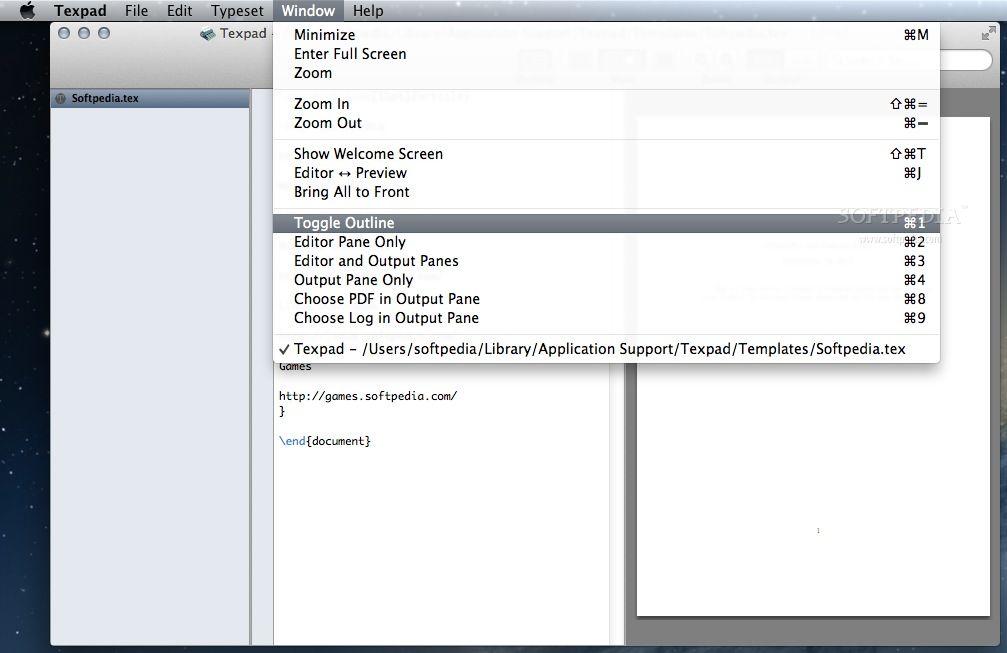
- #Texpad short how to#
- #Texpad short install#
- #Texpad short upgrade#
- #Texpad short full#
- #Texpad short windows 10#
In this figure the previous default name "Gcc" has been changed to " C with Gcc MinGW ". One knows it has worked when the box containing the default name becomes white and the name appears editable (patience is required). To change the default name click on the name itself, slowly two times, with a very small pause between the two clicks. It is normally useful to change the default name to something more meaningful (see next). The Preference dialogue is updated to include the new tool which is given by default the name of its executable file - in this case Gcc. SELECT the desired program and its complete path will be incorporated automatically later. In this example, the gcc.exe compiler for C from MinGW is selected to be the new tool. The small central subwindow lists all the existing tools already configured (or it shows empty).Ī regular set of dialogue windows from the system will appear, allowing navigation to the correct directory from which to choose the program needed to be implemented in the new tool. SELECT: Configure -> Preferences to obtain the dialogue shown in the figure. In order to add a new tool, one must use the "Configure" menu. The required Tool appears from the "Tools" menu, as in the example menu here where a list of existing commands have already been configured. When wanting to compile a source file directly from within TextPad, almost using TextPad as an IDE (Integrated Development Environment), a " Tool" must be configured to call on the appropriate command together with its parameters plus input and output files.
#Texpad short how to#
#Texpad short full#
Full detailed instructions are available in the TextPad "help". This short guide summarizes how to enable the personalization. The TextPad available on lab machines has already been configured for most common uses as necessary in the particular courses. Setting it up to work effectively is fairly easy and can increase productivity for a user. Textpad allows the extra features of linking to commonly used programs directly, for example a C compiler. It is well worth downloading it and paying the modest fee to use it on your own machine (plus it is the ethical thing to do as in the future you will like to be paid for your efforts as a software producer!). The CSC department has a licence for it and it is thus available in all labs machines.

TextPad is an excellent editor for the Windows environment. Setting up direct links to compiling and executing for C, Java and ARM programming 8 to 9), the installation process will try to preserve your current TextPad settings.Short guide on how to configure "Tools" and "Classes" in TextPad When upgrading from the previous major release (eg.
#Texpad short install#

For your security, all executable files are digitally signed.Īfter you have downloaded the zip file, extract the EXE file, run it and follow the instructions. If the online help is not available in a given language, it is supplied in English. The version 8 zipped setup.exe files contain TextPad, with the English user interface, plus one other language, and a dictionary for the spell checker, as shown in the tables. This setup program installs the 64-bit edition of TextPad with all these user interface languages: English, Deutsche, Español, Français, Italiano, Nederlands, Polski, Português, 日本語, 한국어.
#Texpad short windows 10#
#Texpad short upgrade#
You are welcome to download a copy of TextPad for evaluation, or to upgrade from an earlier release. Additional Dictionaries for the TextPad 8 Spell Checker.


 0 kommentar(er)
0 kommentar(er)
